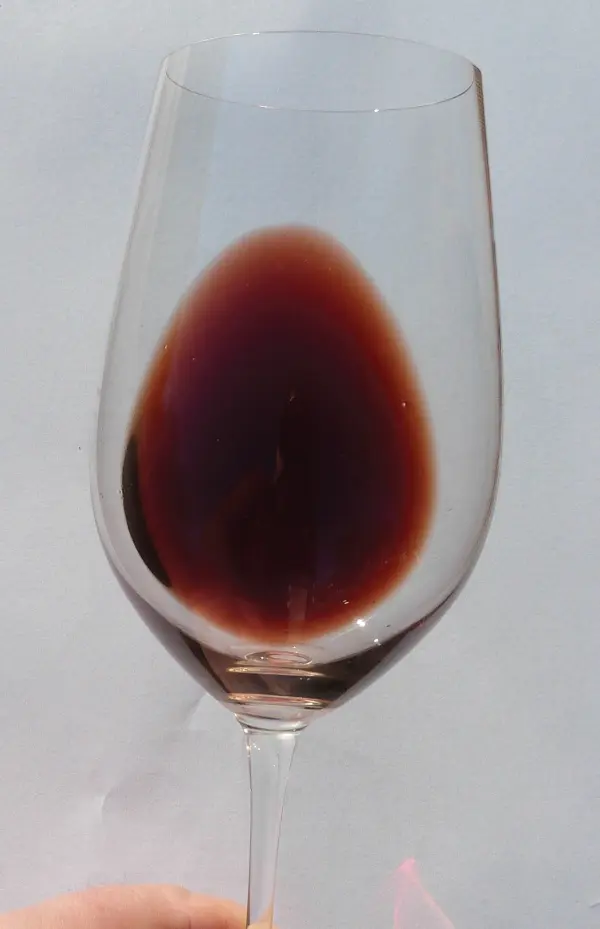Keith Grainger - Wine Faults and Flaws
Здесь есть возможность читать онлайн «Keith Grainger - Wine Faults and Flaws» — ознакомительный отрывок электронной книги совершенно бесплатно, а после прочтения отрывка купить полную версию. В некоторых случаях можно слушать аудио, скачать через торрент в формате fb2 и присутствует краткое содержание. Жанр: unrecognised, на английском языке. Описание произведения, (предисловие) а так же отзывы посетителей доступны на портале библиотеки ЛибКат.
- Название:Wine Faults and Flaws
- Автор:
- Жанр:
- Год:неизвестен
- ISBN:нет данных
- Рейтинг книги:4 / 5. Голосов: 1
-
Избранное:Добавить в избранное
- Отзывы:
-
Ваша оценка:
- 80
- 1
- 2
- 3
- 4
- 5
Wine Faults and Flaws: краткое содержание, описание и аннотация
Предлагаем к чтению аннотацию, описание, краткое содержание или предисловие (зависит от того, что написал сам автор книги «Wine Faults and Flaws»). Если вы не нашли необходимую информацию о книге — напишите в комментариях, мы постараемся отыскать её.
FLAWS
Wine Faults and Flaws: A Practical Guide
An essential guide to the faults and flaws that can affect wine
Wine Faults and Flaws — читать онлайн ознакомительный отрывок
Ниже представлен текст книги, разбитый по страницам. Система сохранения места последней прочитанной страницы, позволяет с удобством читать онлайн бесплатно книгу «Wine Faults and Flaws», без необходимости каждый раз заново искать на чём Вы остановились. Поставьте закладку, и сможете в любой момент перейти на страницу, на которой закончили чтение.
Интервал:
Закладка:
2.3.2.2 Glass Washing and Storage
Ideally, wine glasses should be washed by hand just in hot water. If the glasses show signs of grease or lipstick, a little detergent may be used. The glasses should be well rinsed with hot water, briefly drained then dried using a clean, dry, glass cloth. The glass cloth must be previously washed without the use of fabric conditioner in the washing cycle, which can leave the glass with aromas, and a film on the surface. Glass cloths should be changed regularly – perhaps after drying as few as six glasses. The odour of a damp or dirty glass cloth stays in the glass and impacts on the content. Glasses always need to be nosed to check for basic cleanliness and the absence of ‘off’ aromas before use.
Glasses should not be stored bowl down on shelves, for they may pick up the smell of the shelf and develop mustiness. Standing glasses upright on shelves may lead them to collect dust, so a rack in which glasses are held upside down by the base on pegs is ideal. To be sure that no taint from the glass is transmitted to the wine, it is a good idea to rinse the glass with a little of the wine to be tasted. This is also useful if tasting several wines from the same glass.
2.3.2.3 Water
There should be a supply of pure, still, mineral, or spring water for the taster to refresh the palate between wines, if necessary, for drinking and perhaps rinsing glasses. The variable amount of chlorine contained in most tap water usually makes it unsuitable. Sparkling water is best avoided because the carbonic acid (H 2CO 3) content will impact upon, the assessment of the wine's acidity, sweetness, and balance. Plain, salt‐free biscuits such as water biscuits may also be provided, but some tasters believe that these corrupt the palate a little. Plain, low‐salt content, soft bread is a possible alternative. Cheese, although sometimes provided at tasting events, should be avoided. The fat it contains will coat the tongue. The protein content combines with and can soften the perception of wine tannins. Any salt content will fight the tannins.
2.3.2.4 Spittoons
Spittoons, placed within easy reach of the participants, are essential at any wine tasting. Depending on the number of attendees and the capacity required, there are many possibilities. In the absence of purpose‐made spittoons, wine‐cooling buckets will suffice, perhaps with some sawdust or shredded paper in the bottom, to reduce splashing. There are many designs of spittoons suitable for placing on tables and larger units for standing on the floor. Consideration should be given to the construction material. Plastic, stainless steel, and aluminium are all good. Unlined galvanised metal should be avoided at all cost as wine acids can react with the galvanisation and create disgusting aromas. The importance of spitting at wine‐tastings cannot be overemphasised. The taster needs to keep a clear head and generally avoid unnecessary ingression of alcohol. Even when wines are spat out, a tiny amount will still make its way to the stomach, and indeed a minute amount will also enter the body via the act of nosing the wines. The reader is advised not to drive after wine tasting, even if all the wines have been spat out.
2.3.3 When to Taste
As to when to taste, the decision is unfortunately often dictated by matters beyond the taster's control. However, the ideal time is when the taster is most alert and the appetite stimulated – namely in the late morning. After a meal is certainly not the best time, for not only is the taster replete and perhaps drowsier (as all early afternoon seminar presenters know), but also the palate is jaded and confused. The constituents of many foods will have an impact, positive or negative, upon taste perceptions.
2.4 The Use of a Structured Tasting Technique and Detection of Faults
A structured tasting technique for wine assessment is valuable in ensuring all the characteristics of a wine are considered by a taster, the members of a panel of tasters, and groups of panels, are using the same criteria in their assessments. The usual sequence of tasting is to examine the appearance of the wine, followed by the nose, then the palate. Conclusions about the wine may be summarised, and these will include considerations as to quality. A fault or flaw may be revealed at any or all stages of the tasting assessment, depending upon the defect in question. For example, oxidation may manifest itself on appearance, nose, and palate. Taints by haloanisoles cannot be seen, but will certainly be smelt and tasted. The flaw of excessive acidity, other than volatile acidity, will not be seen or smelt but will be disclosed upon the palate. It is possible for wines to exhibit multiple faults. Some faults, particularly if at a low level, may not reveal themselves upon first assessment, but become apparent upon returning to the wine after some minutes. In other cases, a characteristic that initially appears to represent a fault may dissipate after the wine has been oxygenated and kept in the glass for a few minutes. The taster should note the indicators of each fault or flaw when suspected or confirmed at each stage of the organoleptic assessment.
2.5 Appearance
2.5.1 The Appearance Assessment
The first stage in a tasting assessment is to examine the appearance. This can reveal much about the wine and give indications as to the origin, style, quality, and maturity, as well as revealing some possible faults. Faults that are or may be detectable on the appearance are shown in Table 2.1. This list is not exhaustive.
Table 2.1 Some faults detectable on appearance of wine.
| Visual indicator | Possible fault | Refer to: |
|---|---|---|
| Browning, loss of colour (red wines), ‘flat’ or dull appearance | Oxidation | Chapter 5 |
| Deepening of colour (white or sparkling wine) | Oxidation Lightstrike | Chapter 5 Chapter 6 |
| Unexpectedly light colour | Atypical ageing | Chapter 8 |
| Unexpected bubbles, sludgy sediments | Fermentation in bottle | Chapter 9 |
| Haze | Presence of yeast or bacteria. Unstable proteins | Chapter 10 |
| Cloudy appearance with brown tinges | Heat damage | Chapter 14 |
Wine appearance should be examined in several ways, including holding the glass at approximately 30° from the horizontal over a white background, a tablecloth or sheet of white paper, as illustrated in Figures 2.1and 2.2. This will enable the clarity, the intensity of colour, and the true colour of the wine to be seen, uncorrupted by other colours in the room. Figure 2.1shows a vibrant purple cask sample – Château Margaux 2017 (photograph taken in April 2018). Figure 2.2shows a 40 years old Margaux – Château Lascombes 1979 (photo taken in February 2020).

Figure 2.1 A cask sample Margaux – Ch. Margaux 2017.

Figure 2.2 A 40 years old Margaux – Ch. Lascombes 1979.
2.5.2 Clarity and Brightness
A wine that has finished fermentation and been stabilised should be clear and bright. Brightness is a sign of healthiness. Brightness is how light is reflected off the surface of the wine and is related to the pH – the lower the pH, the brighter the wine usually is, as the charge on suspended particles is higher. Clarity is how light is scattered as it passes through the body of the wine, and this is related to turbidity, i.e. suspended particles. If a mature wine that has thrown sediment has been carelessly handled, then there may be fine or larger particles in suspension. This is not a fault per sé, but a natural consequence of the tertiary development of the wine. However, any packaged wine that appears cloudy, oily, milky, or otherwise murky is suffering from one or more faults, for example, refermentation in the bottle – see Chapter 9– or ropiness – see Chapter 11.
Читать дальшеИнтервал:
Закладка:
Похожие книги на «Wine Faults and Flaws»
Представляем Вашему вниманию похожие книги на «Wine Faults and Flaws» списком для выбора. Мы отобрали схожую по названию и смыслу литературу в надежде предоставить читателям больше вариантов отыскать новые, интересные, ещё непрочитанные произведения.
Обсуждение, отзывы о книге «Wine Faults and Flaws» и просто собственные мнения читателей. Оставьте ваши комментарии, напишите, что Вы думаете о произведении, его смысле или главных героях. Укажите что конкретно понравилось, а что нет, и почему Вы так считаете.












